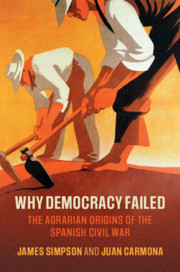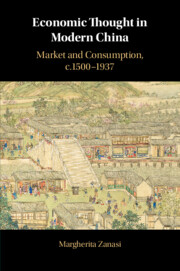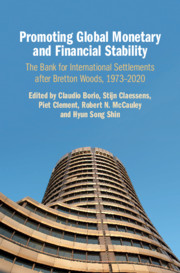Refine search
Actions for selected content:
26978 results in Economic history
4 - France and New France
- from Part I - Emergence
-
- Book:
- Unravelled Dreams
- Published online:
- 08 October 2020
- Print publication:
- 23 April 2020, pp 162-208
-
- Chapter
- Export citation
Select Bibliography
-
- Book:
- Unravelled Dreams
- Published online:
- 08 October 2020
- Print publication:
- 23 April 2020, pp 458-462
-
- Chapter
- Export citation
8 - Convergence
- from Part III - Convergence
-
- Book:
- Unravelled Dreams
- Published online:
- 08 October 2020
- Print publication:
- 23 April 2020, pp 351-366
-
- Chapter
- Export citation
Tables
-
- Book:
- Unravelled Dreams
- Published online:
- 08 October 2020
- Print publication:
- 23 April 2020, pp xii-xii
-
- Chapter
- Export citation
7 - New England
- from Part II - Persistence
-
- Book:
- Unravelled Dreams
- Published online:
- 08 October 2020
- Print publication:
- 23 April 2020, pp 312-348
-
- Chapter
- Export citation
3 - England and Virginia
- from Part I - Emergence
-
- Book:
- Unravelled Dreams
- Published online:
- 08 October 2020
- Print publication:
- 23 April 2020, pp 98-161
-
- Chapter
- Export citation
9 - Pennsylvania and Sericultural Revolution
- from Part III - Convergence
-
- Book:
- Unravelled Dreams
- Published online:
- 08 October 2020
- Print publication:
- 23 April 2020, pp 367-388
-
- Chapter
- Export citation
5 - Persistence
- from Part II - Persistence
-
- Book:
- Unravelled Dreams
- Published online:
- 08 October 2020
- Print publication:
- 23 April 2020, pp 211-237
-
- Chapter
- Export citation
Part II - Persistence
-
- Book:
- Unravelled Dreams
- Published online:
- 08 October 2020
- Print publication:
- 23 April 2020, pp 209-348
-
- Chapter
- Export citation
Figures
-
- Book:
- Unravelled Dreams
- Published online:
- 08 October 2020
- Print publication:
- 23 April 2020, pp x-x
-
- Chapter
- Export citation
Part I - Emergence
-
- Book:
- Unravelled Dreams
- Published online:
- 08 October 2020
- Print publication:
- 23 April 2020, pp 41-208
-
- Chapter
- Export citation
Building Industrial Districts: Do Subsidies Help? Evidence from Postwar Italy
-
- Journal:
- Business History Review / Volume 94 / Issue 2 / Summer 2020
- Published online by Cambridge University Press:
- 20 April 2020, pp. 399-423
- Print publication:
- Summer 2020
-
- Article
- Export citation

A Silver River in a Silver World
- Dutch Trade in the Rio de la Plata, 1648–1678
-
- Published online:
- 18 April 2020
- Print publication:
- 30 April 2020

Why Democracy Failed
- The Agrarian Origins of the Spanish Civil War
-
- Published online:
- 17 April 2020
- Print publication:
- 07 May 2020

Economic Thought in Modern China
- Market and Consumption, c.1500–1937
-
- Published online:
- 16 April 2020
- Print publication:
- 07 May 2020

Promoting Global Monetary and Financial Stability
- The Bank for International Settlements after Bretton Woods, 1973–2020
-
- Published online:
- 10 April 2020
- Print publication:
- 30 April 2020
Acknowledgements
-
- Book:
- GATT and Global Order in the Postwar Era
- Published online:
- 02 May 2020
- Print publication:
- 09 April 2020, pp x-xi
-
- Chapter
- Export citation
Tables
-
- Book:
- GATT and Global Order in the Postwar Era
- Published online:
- 02 May 2020
- Print publication:
- 09 April 2020, pp ix-ix
-
- Chapter
- Export citation
Conclusion
-
- Book:
- GATT and Global Order in the Postwar Era
- Published online:
- 02 May 2020
- Print publication:
- 09 April 2020, pp 286-294
-
- Chapter
- Export citation
4 - ‘Spread Like the Plague’
-
- Book:
- GATT and Global Order in the Postwar Era
- Published online:
- 02 May 2020
- Print publication:
- 09 April 2020, pp 141-173
-
- Chapter
- Export citation
